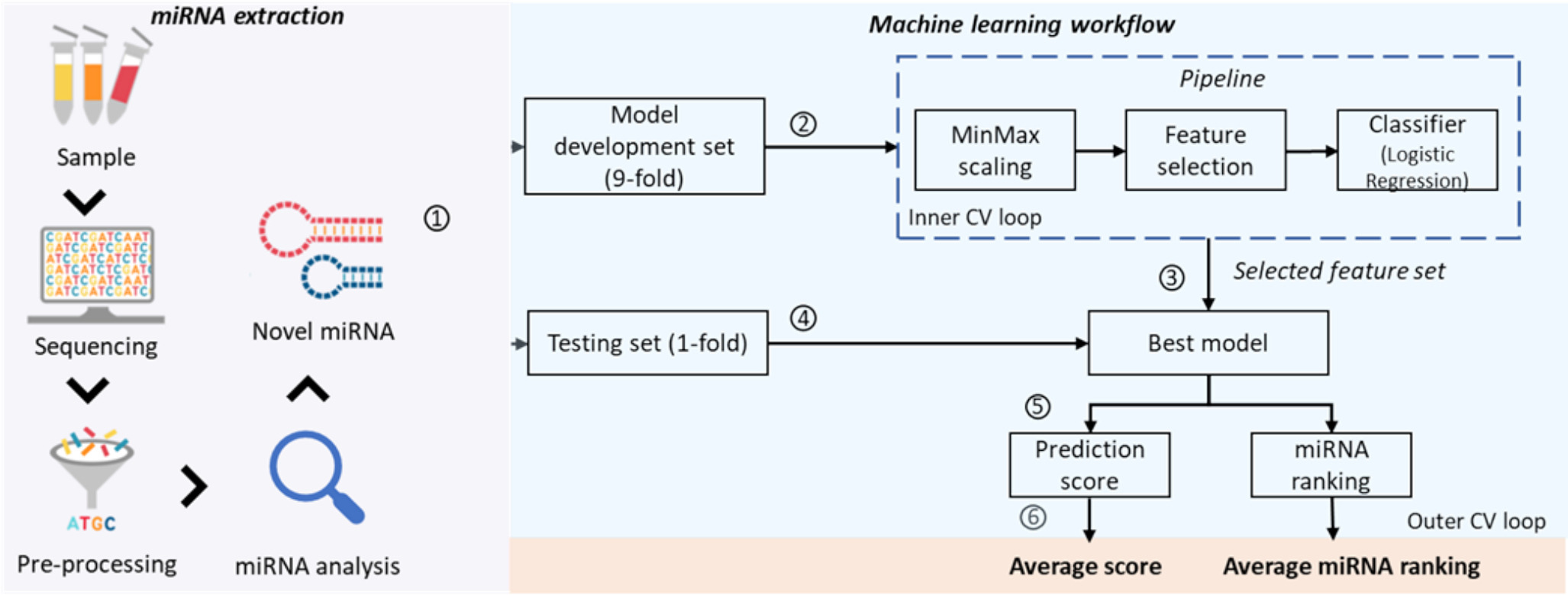MicroRNA classification and discovery for major depressive disorder diagnosis: Towards a robust and interpretable machine learning approach
Author: Tang Toong Boon- September 2017
Yee Ling Chan, Cyrus S.H. Ho, Gabrielle W.N. Tay, Trevor W.K. Tan
Abstract
Major depressive disorder (MDD) is notably underdiagnosed and undertreated due to its complex nature and subjective diagnostic methods. Biomarker identification would help provide a clearer understanding of MDD aetiology. Although machine learning (ML) has been implemented in previous studies to study the alteration of microRNA (miRNA) levels in MDD cases, clinical translation has not been feasible due to the lack of interpretability (i.e. too many miRNAs for consideration) and stability. This study applied logistic regression (LR) model to the blood miRNA expression profile to differentiate patients with MDD (n = 60) from healthy controls (HCs, n = 60). Embedded (L1-regularised logistic regression) feature selector was utilised to extract clinically relevant miRNAs, and optimized for clinical application. Patients with MDD could be differentiated from HCs with the area under the receiver operating characteristic curve (AUC) of 0.81 on testing data when all available miRNAs were considered (which served as a benchmark). Our LR model selected miRNAs up to 5 (known as LR-5 model) emerged as the best model because it achieved a moderate classification ability (AUC = 0.75), relatively high interpretability (feature number = 5) and stability (∅ (Z) = 0.55) compared to the benchmark. The top-ranking miRNAs identified by our model have demonstrated associations with MDD pathways involving cytokine signalling in the immune system, the reelin signalling pathway, programmed cell death and cellular responses to stress. The LR-5 model, which is optimised based on ML design factors, may lead to a robust and clinically usable MDD diagnostic tool.
Methodology
Venous blood was collected from each subject using PAXGene Blood RNA tubes, which contain a reagent that lyses blood cells and immediately stabilises intracellular RNA to preserve the gene expression profile (Qiagen, CA, USA). In accordance with the manufacturer's recommendations, these tubes were first left to stand at room temperature for 2 h before being transferred to a -20 °C freezer for the next 24 h. They were eventually transferred a second time to a -80 °C freezer for storage and then shipped on dry ice to the analytical laboratory.
Impact & Benefits
Improved Accuracy and Early Detection: miRNAs can serve as reliable biomarkers for MDD. Machine learning models can identify specific miRNA expression patterns associated with MDD, improving diagnostic accuracy.
Targeted Therapies: Discovering miRNAs associated with MDD can highlight new targets for drug development. Therapies that modulate specific miRNAs could be developed to alleviate depressive symptoms.
Enhanced Understanding of MDD Pathophysiology: Machine learning models can uncover complex relationships between miRNAs and MDD, providing deeper insights into the molecular mechanisms underlying the disorder.
Reduced Healthcare Costs: Early and accurate diagnosis of MDD can reduce the long-term healthcare costs associated with untreated or poorly managed depression.
Market Potential
High Prevalence of MDD: MDD is one of the most common mental disorders globally, affecting millions of people. The high prevalence rate drives demand for better diagnostic and treatment methods.
Advancements in Biotechnology and Genomics: Advances in miRNA research, sequencing technologies, and bioinformatics make it feasible to identify and utilize miRNA biomarkers for MDD diagnosis.
Diagnostic Laboratories: Laboratories specializing in clinical diagnostics are likely to adopt miRNA-based tests for MDD, driven by the need for more accurate and early diagnosis tools.
Cost Savings: Early and accurate diagnosis of MDD can reduce long-term healthcare costs by preventing severe complications and improving treatment efficiency.


